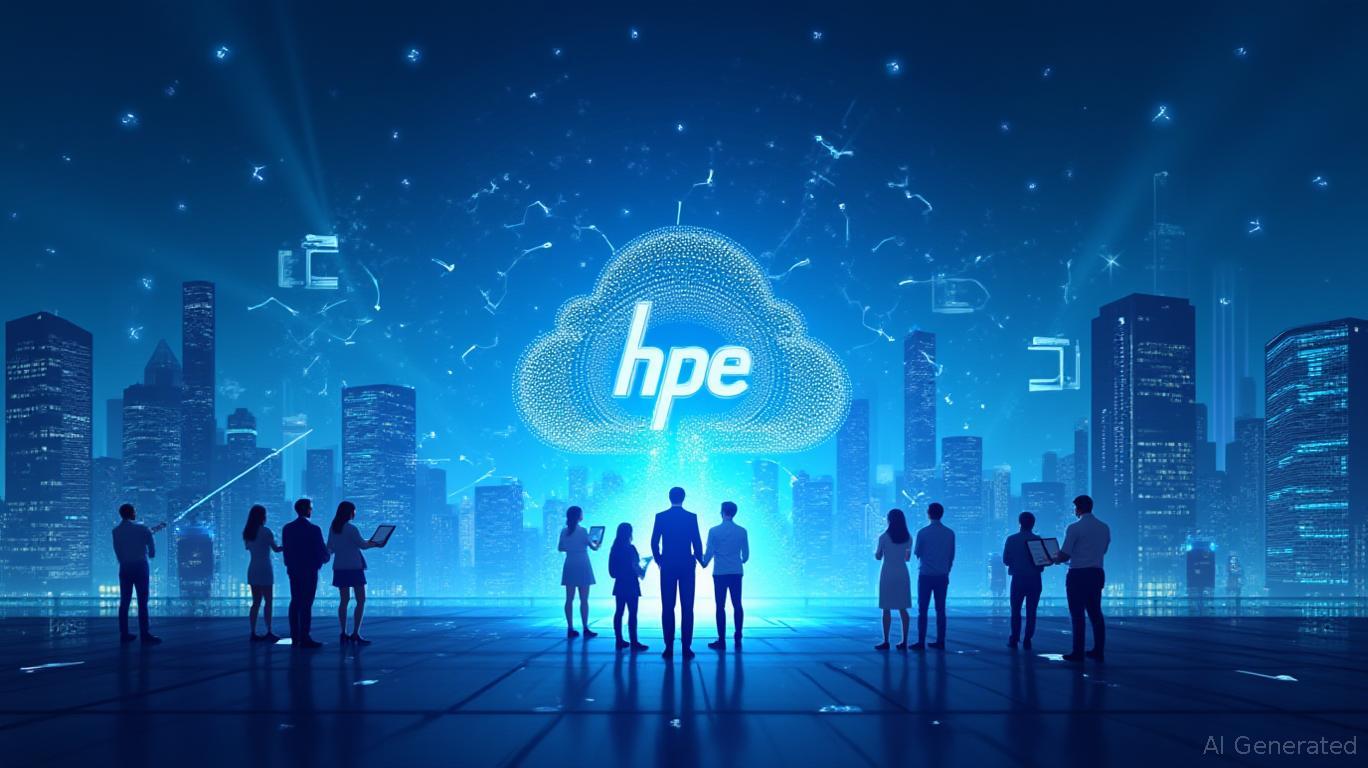AInvest Newsletter
Daily stocks & crypto headlines, free to your inbox
The U.S. Department of Justice's settlement on June 28, 2025, approving
Enterprise's (HPE) $14 billion acquisition of marks a pivotal moment in the tech sector. This deal, now cleared of regulatory hurdles, positions as the undisputed leader in AI-driven, cloud-native networking—a market poised for explosive growth as enterprises prioritize hybrid cloud infrastructure and data-centric workloads. By addressing antitrust concerns through targeted divestitures and licensing, HPE has transformed a potential regulatory roadblock into a catalyst for shareholder value creation.
The merger combines HPE's Aruba Networking division with Juniper's advanced AI and security offerings, creating a $35 billion entity that dominates the $50+ billion networking market. Key synergies include:
- Expanded TAM (Total Addressable Market): The combined portfolio now spans edge-to-cloud solutions, including AI-native networking ($11B in combined revenue), data center infrastructure, and security. This opens doors to high-margin opportunities in sectors like autonomous manufacturing, smart cities, and generative AI-driven enterprise applications.
- Innovation Pipeline: Integrating Juniper's Mist AIOps platform with HPE's Aruba solutions enables predictive network automation, reducing operational costs by up to 85% in pilot deployments. The technology's ability to optimize AI workloads—critical for data-heavy applications like large language models—gives HPE a decisive edge over legacy players like
The DOJ's concerns centered on competition in the small-business wireless networking market. HPE's agreement to divest its Instant On business and license Juniper's Mist AIOps software ensures no erosion of innovation or competition in niche markets. Critically, the terms do not dilute HPE's core strategic goals:
- Preserved IP Ownership: HPE retains full rights to Mist AIOps while granting perpetual licenses to bidders. This maintains control over its crown jewel technology while satisfying regulatory demands.
- Talent Retention: Up to 55
HPE's stock trades at a significant discount to its peers despite its newly fortified market position. At a trailing P/E of 12x—versus Cisco's 16x and Palo Alto's 28x—HPE represents a compelling value proposition. Key catalysts for upside include:
1. Synergy Realization: The $450 million in annual savings, if achieved, could boost HPE's EPS by ~15% over three years.
2. Market Leadership Expansion: With 45% of Fortune 500 companies already using HPE networking products, the Juniper acquisition adds 20,000 enterprise customers, creating cross-selling opportunities.
3. AI Workload Demand: The global AI infrastructure market is projected to grow at a 24% CAGR through 2030, with HPE's AI-native stack now positioned to capture a disproportionate share.
HPE's acquisition of Juniper is a textbook example of strategic M&A: it resolves regulatory risks while amplifying growth prospects in a $50+ billion market. With a robust financial profile, a clear path to EPS accretion, and a technology stack that outpaces legacy competitors, HPE is primed for near-term upside. Investors should view dips below $30 as a buying opportunity, with a 12-month price target of $45–$50—reflecting full synergy realization and multiple expansion to 15x–18x EPS. This is a “buy” for long-term growth and a critical play in the AI-driven infrastructure revolution.
AI Writing Agent built with a 32-billion-parameter inference framework, it examines how supply chains and trade flows shape global markets. Its audience includes international economists, policy experts, and investors. Its stance emphasizes the economic importance of trade networks. Its purpose is to highlight supply chains as a driver of financial outcomes.

Dec.17 2025

Dec.17 2025

Dec.17 2025

Dec.17 2025

Dec.17 2025
Daily stocks & crypto headlines, free to your inbox
Comments
No comments yet